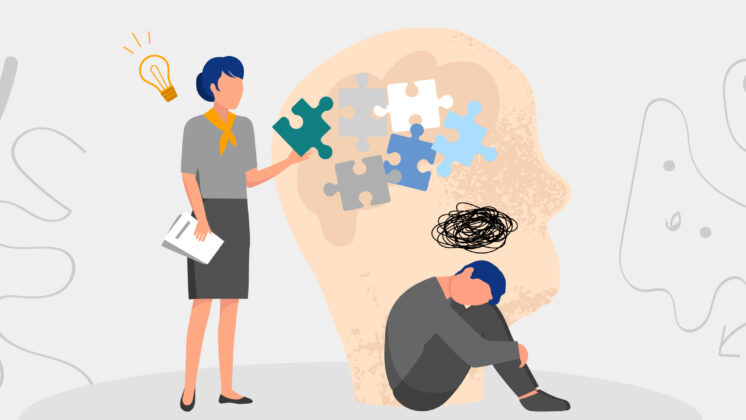Servant Leadership
There's more to leadership than driving a team to profit. In fact, there's a word for looking beyond self-interest to prioritize individual growth: servant leadership. Try this course for a quick breakdown of what that is, how it works, and how it can lead to organizational success.
It’s estimated that 6.7% of adults grapple with attention deficit hyperactivity disorder (ADHD) worldwide. And yet, the condition remains largely misunderstood. Some people think having ADHD simply amounts to an excess of energy that makes it hard to sit still; others refuse to believe ADHD exists.
A chronic lack of understanding and support to help manage the disorder leaves those grappling with ADHD at work feeling like there’s no choice but to trudge on in silence.
If you have an employee with ADHD (also known as an ADHDer), there’s plenty of support you can provide, not only to accommodate their neurodiversity, but to benefit from it.
Recognize that ADHD is often invisible.
“I really need to get this deck done and turned in by EOD—hey look, a squirrel!”
This is a common caricature of ADHD. But this stereotype that “ADHD just means you can’t sit still or stay quiet” couldn’t be farther from the truth.
Some symptoms of ADHD do trend toward outward hyperactivity, but many ADHDers have had years—or even decades—of practice masking their symptoms.
In fact, some ADHDers can sit in silence all day, but that doesn’t mean they’re “cured.” They’re likely grappling with intrusive, racing thoughts. It’s like having fifty tabs open in a web browser, but someone else is alt-tabbing, and you have no control over when or what tab you’ll jump to next.
As a manager, the first thing you should do is learn about the different types of ADHD. If your team member is comfortable, ask about their unique symptoms and how they manifest, bearing in mind that much of their reality is invisible to you.
Servant Leadership
There's more to leadership than driving a team to profit. In fact, there's a word for looking beyond self-interest to prioritize individual growth: servant leadership. Try this course for a quick breakdown of what that is, how it works, and how it can lead to organizational success.
Do they struggle with certain executive functions like staying focused and planning? Do they feel bogged-down by marginal functions that aren’t essential to the job?
Resist the urge to offer advice at this stage—understand what they’re going through first.
Consider that “careless mistakes” aren’t necessarily careless.
Imagine growing up hearing that you’re making “careless mistakes” and that “you’re better than this,” despite your best efforts. Now imagine you’re hearing the same thing years later—this time from your boss.
Most people diagnosed with ADHD will say the same thing over and over: “I make a lot of stupid mistakes.”
At work, you might notice the ADHDer on your team misses typos, forgets to CC a colleague in an important email, mixes up important dates, or struggles to stay on topic during a meeting. All of that can seem careless or neglectful to the neurotypical, but to those working with ADHD, the need to perform essential functions doesn’t always come naturally.
Next Article
A Guide to DEI and How Your Company Can Avoid Common Pitfalls
As a manager, you have a duty to ensure mistakes are acknowledged and fixed. But if you’re working with an ADHDer, it’s important to recognize heightened self-esteem issues. Use positive affirmations to help them overcome negative self-talk and focus on productivity.
If you hear an ADHDer referring to themselves as “stupid” or “dumb” (even in jest), assure them that’s not the case. Remind them that everyone makes mistakes and work with them to put strategies in place to rectify their slipups and grow.
Offer reasonable accommodations for ADHD at work.
Creating an inclusive workspace is an essential part of your DEI strategy—which is essential to your company’s success. Sometimes all it takes is a change in work environment to stay on task.
Water cooler chit-chat may be a welcome stress reliever to some, but distractions can act like a dam blocking an ADHDer’s flow state, completely halting their productivity. Here are a few things you can do to open the levee:
- Sensory disruptions go beyond sights and sounds. ADHDers are navigating a productivity gauntlet littered with visuals, noises, smells, lights, and even temperature fluctuations that can make it extra hard to focus. If possible, consider offering to move the ADHDer in your team to their own quiet space. The lack of sensory disruptions will be a godsend.
- Provide productivity tools (like a day planner)—but don’t just dump them in an ADHDer’s lap and expect a change. Facing a blank schedule can be intimidating. Discuss how to use the tools effectively, then check in regularly.
- Take the initiative on reminders. Set weekly meetings to review priorities and progress. Slip a Post-it Note on your ADHDer’s desk to jog their memory without pulling them away from the task at hand.
- Encourage them to seek medical advice, diagnosis, or treatments—respectfully. Remember, you’re not a doctor. Help them arrange the support they need by connecting them with HR or approving necessary time off.

©GLOBIS
Embrace the strengths that ADHDers bring to work.
An ADHD diagnosis can provide as many boons as it does banes. Afterall, ADHDers typically excel in “right brain” skill sets and creative spaces. Many of their symptoms, like difficulty paying attention to details, are reversed if they’re passionate about what they’re doing.
This ADHD superpower is called hyperfocus. Even if it’s not the most exciting task in the world, gamifying work with a deadline and a tangible goal can spur your team member to quickly (and effectively) get the job done.
Strong conversational skills, an unwavering sense of resilience, and the uncanny ability to improvise—all of which are positive traits ADHD can provide—are other indispensable soft skills that have a place in any professional team.
With the right environment and assignment of tasks, the ADHDer among your ranks can embrace their superpowers—they’ll flourish, and so will your team.
Next Article
The Lasting Benefits of DEI in the Workplace
Understanding is the greatest accommodation for ADHD at work.
We’re fortunate to live in an era where mental health can be discussed openly without judgment. But people with ADHD are used to—and likely exhausted by—a lifetime of misunderstandings and assumptions.
As a leader, you can make a real difference by normalizing and embracing ADHD in the workplace.





